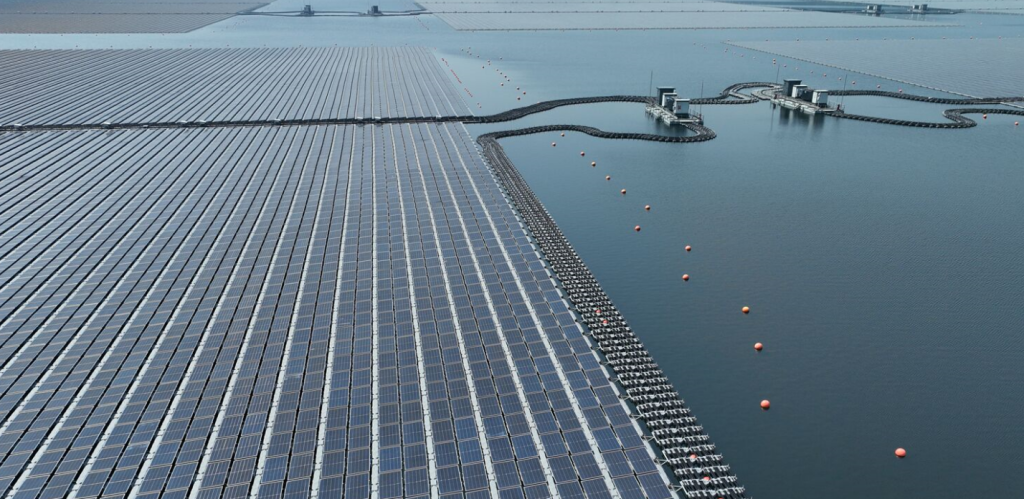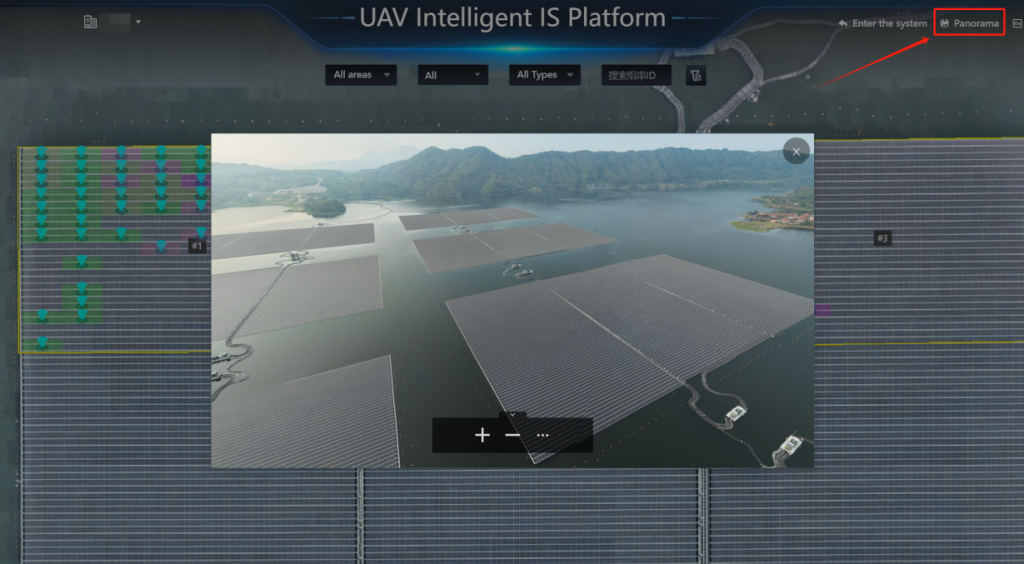In recent years, the Indonesian government has made great efforts to develop renewable energy to meet the growing needs of production and life.

As a country of thousands of islands, Indonesia, with its equatorial landmass, extensive sea area and abundant solar energy resources, is blessed with natural conditions for PV construction.
Based on this, Indonesia has made great efforts to develop offshore photovoltaic projects by taking advantage of its natural advantages, accelerating the adjustment of energy structure through the green, low-carbon and sustainable characteristics of renewable energy, and strengthening the strength of electric power supply, so as to realise a win-win situation for both environmental protection and energy development.
In order to give full play to the advantages of offshore photovoltaic field stations and ensure stable energy supply, an offshore photovoltaic project in Indonesia introduced Skysys PV inspector system, which releases new power in the air for building a clean, low-carbon, safe and efficient energy system.
Although offshore PV has the advantage of wide and unobstructed sea area compared with land PV, the daily work needs to take a boat to get close to the PV strings, which is a long time-consuming operation with high work intensity.
Offshore photovoltaic concentrates panels, inverters, electrical boxes and other equipment in one for power generation, which requires staff to have extremely high professional ability.

However, due to the sometimes poor emergency response speed and the varying degree of individual professionalism, the handling of defects and hidden dangers is relatively passive, which is not conducive to the service life of PV panels in the long run, and also greatly affects the stability and sustainability of power generation at the station.
The Indonesian government has pledged to achieve net-zero emissions by 2060, and the current problems of many blind spots, low efficiency, and the need to improve the degree of specialisation of PV site inspections have caused many constraints in daily operations.
The addition of the Skysys PV Inspector system is an intelligent, unmanned means of applying drone technology to offshore PV inspections, effectively replacing manpower to identify site problems.
The system integrates drone cluster management, route planning, task scheduling, station monitoring, AI detection and other functions to achieve visual management of PV stations.
During the daily inspection and operation and maintenance process, the user can plan the route for the inspection area and release the drone to complete data collection and automatic inspection with one key, which greatly saves the inspection time, simplifies the inspection process, and seamlessly covers every corner.

Drone is equipped with visible light + infrared thermal imaging camera to fully invoke the characteristics of drone all-weather inspection, speed up the frequency of attendance, shorten the inspection cycle, reduce the incidence of failure.
After the information is collected, the user carries out AI intelligent analysis based on the data collected by the drone, relying on the dual-light mode to carry out dual fusion of different defective information and location information of the PV panels, with a single collection and multiple identification, which helps the user to more conveniently observe defects such as shattered and broken, dirty and so on on the surface of the PV panels, and also notice the temperature abnormality inside the PV module in time, effectively solving the problem of hot spots and so on.
The system can achieve component-level positioning and professional-level analysis, which is convenient for operation and maintenance personnel to maintain accurately at a later stage.

In addition to dual-light AI inspection, Skysys PV Inspector also incorporates night-time safety inspection based on the characteristics of offshore PV stations, monitoring abnormal conditions in the sea at night with the help of night-time thermal imaging technology.
At the same time, the platform introduces helmet and lifejacket inspection to ensure that the staff work in a standardised manner during the construction process to ensure personal safety.
After that, Skysys PV Inspector will introduce more AI analysis functions one after another, bringing together more advantages for building unmanned, intelligent and digital offshore PV stations.
At the end of the inspection, Skysys PV Inspector system will classify the detected defects of PV panels and display and count them, showing users the overall status of the station.
The platform generates reports with a single click, providing users with a statistical overview and basis for fault detection, types of faults and corresponding recommendations, an overview of the station in general and each area, and data management and analysis based on time, location information and other dimensions.
Users can make periodic comparisons of the stations, providing an intuitive and effective basis for the adjustment of operation and maintenance strategies.
The Skysys PV Inspector landed in Indonesia, opened a new chapter of Skysys photovoltaic inspection business in Southeast Asian countries, but also in the offshore photovoltaic project for the first time in depth exploration.
The introduction of Skysys PV Inspector will focus on reducing the input of manpower costs in ‘problem detection’, continue to promote the digital transformation of new energy inspection, and boost the development of offshore photovoltaic power generation in Indonesia with the in-depth application of drone technology, so as to collaboratively promote the local economic development and low-carbon goals forward.
In the future, Skysys will continue to use drone technology to ride the wind out of the sea, to provide intelligent inspection services for more new energy industry, to create more strategic opportunities and innovative growth points, but also to let the world feel the strong strength of China’s manufacturing and Chinese science and technology.


